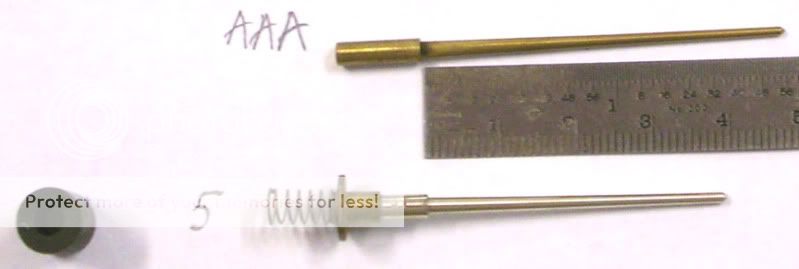bigjones
Jedi Warrior
Offline
I've got a single HS4 on my 1500 Midget.
It's running a bit lean on the stock needle ("5") so I picked up a richer needle ("AAA") from my local LBC shop.
When I got home I realised that this new needle was a "fixed" type and as such will not apparently fit in the carb.

The mystery is that Moss UK lists this "AAA" as a "biased" (or, spring loaded) needle.
Not quite sure what to do about it. Any ideas?
Cheers!
It's running a bit lean on the stock needle ("5") so I picked up a richer needle ("AAA") from my local LBC shop.
When I got home I realised that this new needle was a "fixed" type and as such will not apparently fit in the carb.

The mystery is that Moss UK lists this "AAA" as a "biased" (or, spring loaded) needle.
Not quite sure what to do about it. Any ideas?
Cheers!

 Hi Guest!
Hi Guest!

 smilie in place of the real @
smilie in place of the real @
 Pretty Please - add it to our Events forum(s) and add to the calendar! >>
Pretty Please - add it to our Events forum(s) and add to the calendar! >> 


